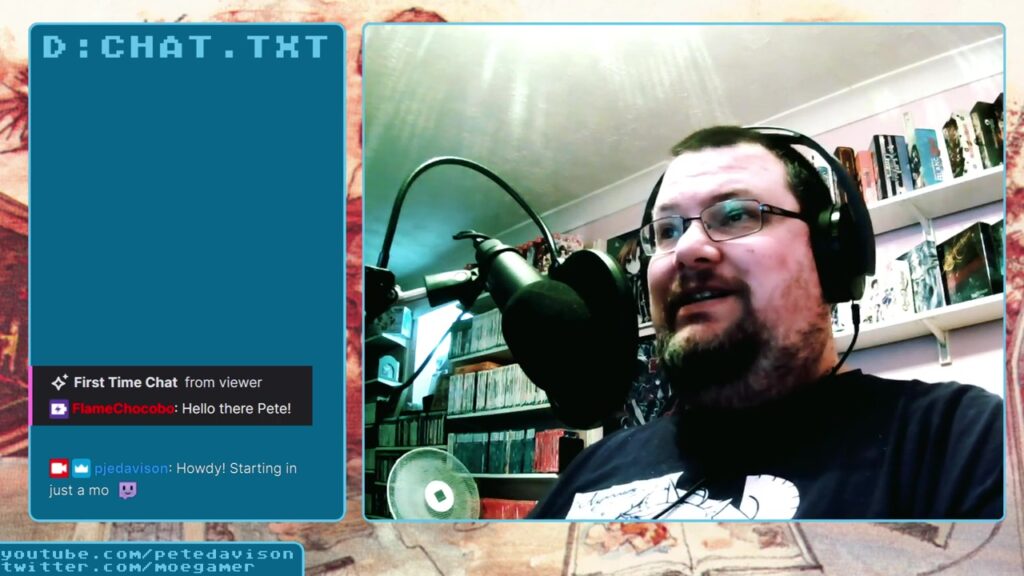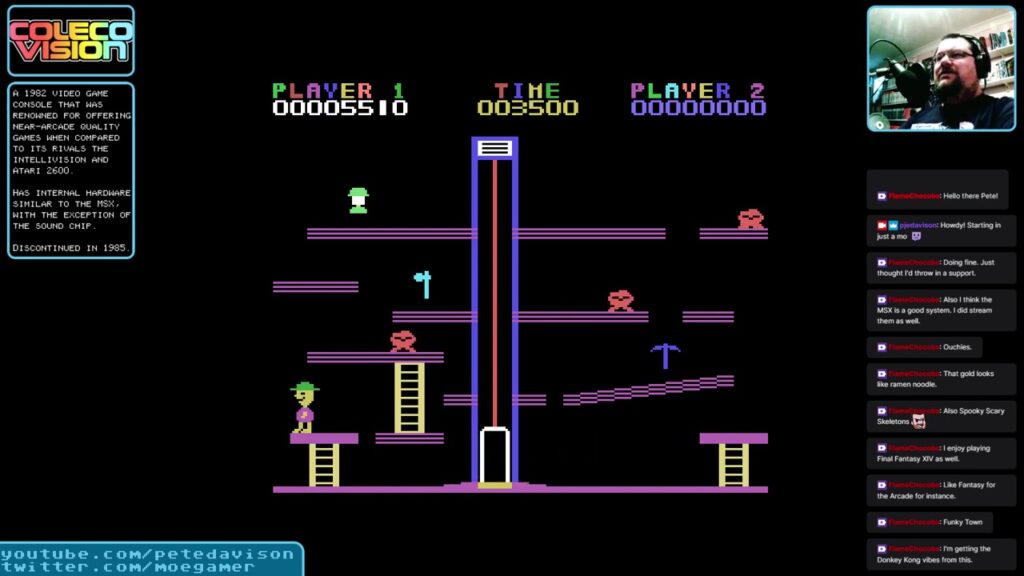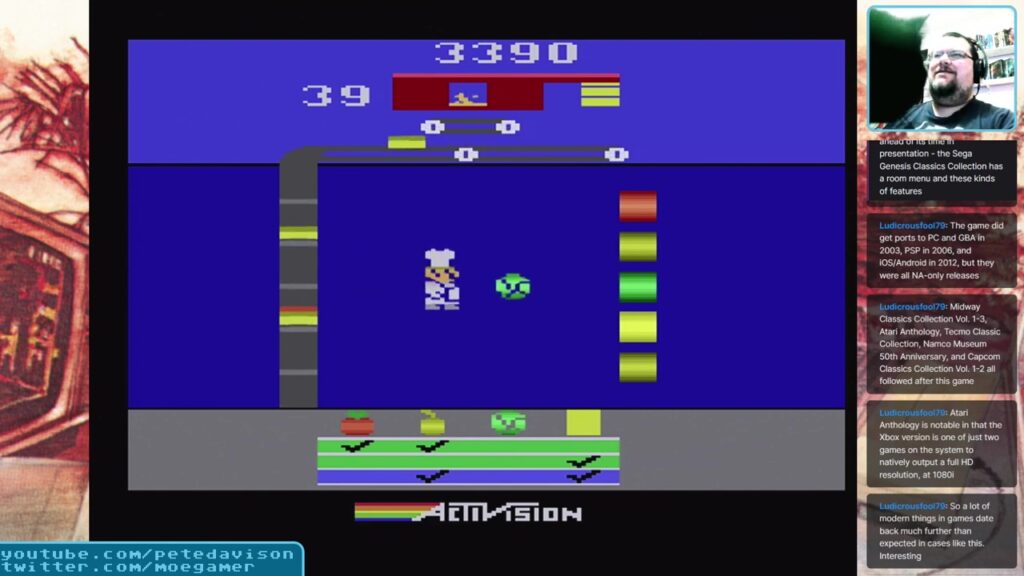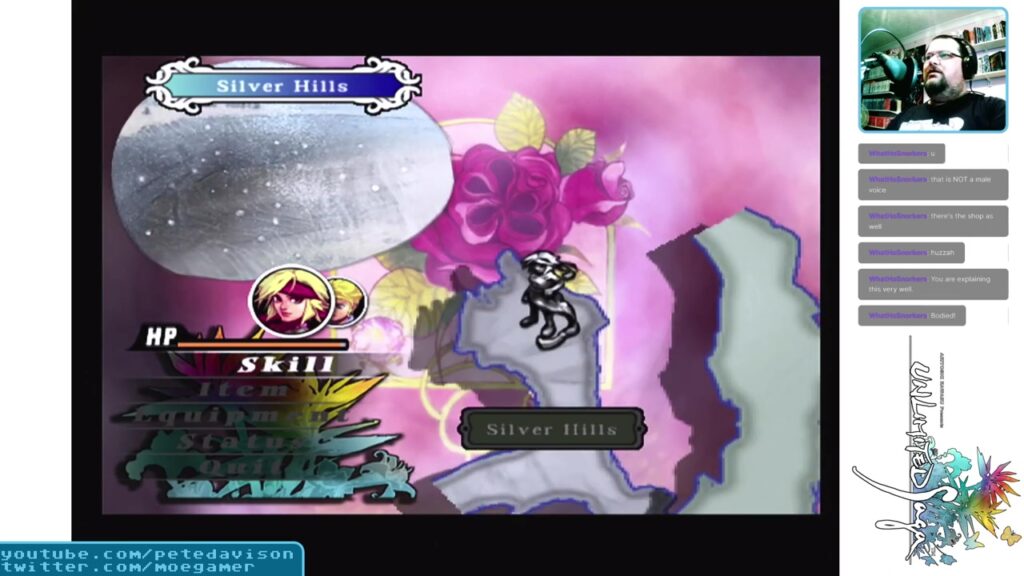Things The Editor has learned from getting started with streaming
Streaming your favourite games is a popular hobby for many people today — and, indeed, many folks make an honest attempt at making a career out of it. Realistically, that’s a difficult (though not impossible) goal to achieve, so it’s best to give it a shot when you feel like you can just have a bit of fun with it.
That’s exactly what I’ve been doing recently. Having been enjoying working on a variety of different YouTube stuff over the course of the last few years, in the last couple of weeks, I decided to give streaming on Twitch a go. And, in case there are any of you out there reading this who might also be interested in giving it a try too, I thought I’d compile a few things that I’ve learned from my first few streams!

Get into the groove and it doesn’t matter if no-one’s watching
One of the most common questions prospective new streamers ask is whether or not they should be talking if no-one is watching. And the answer is simple: yes, you absolutely should. It may feel silly to do so to begin with, but once you get into the rhythm of things, you’ll find that simply vocalising your thoughts and opinions about the game — along with perhaps sharing some interesting trivia that you’ve learned recently — makes for a pleasingly natural-feeling stream that people can drop into and immediately see that you appear to know what you’re doing.
On top of that, keeping a consistent commentary going also makes your streams suitable for exporting to YouTube for people to enjoy when you’re not live. If you, like me, have friends all over the world thanks to the Internet and thus don’t have a particularly “optimal” time to broadcast, this provides you with the best of both worlds: people who are around for your live show can interact with you in real time, while those with incompatible time zones can still feel like they’ve had something worthwhile to watch.
Chatters will inevitably drift off-topic
One difference between streaming and recording a Let’s Play is that there are people in your chat. If you choose to pay attention to your chat during gameplay — which some streamers don’t, and that’s fine — then it’s worth being prepared for the fact that inevitably at least one person, usually someone you know personally, will ask or say something that is absolutely nothing to do with your stream or the game you are playing.
Whether or not you think this is a problem is an important consideration, and something you might want to set expectations about up front. If, say, you’re streaming a story-based game and you want to remain as involved and immersed as possible, make it clear to your chat — perhaps through the chat rules you can get to pop up the first time people start typing something — that you’d prefer chat to be kept on-topic as much as possible.
On the other hand, being willing to engage with your audience on the things they’re asking you about can help you build a reputation as an “interactive” streamer. My personal feelings on this is that this style of audience-streamer interaction is best saved for games that can be played a bit more casually or passively — something like Splatoon 3’s multiplayer would be a good stream to “just chat” over, for example — while you probably want to try and keep people on-topic during story-centric games.

You’ll get things wrong, and that’s fine
There’s an episode of Matt Berry’s wonderful comedy-drama Toast of London where Berry’s character, the eponymous Steven Toast, becomes paralysed with fear at the prospect of a theatrical performance being broadcast on live television. By this point in the series, Toast is well-established as an experienced actor — albeit one who hasn’t had the best of luck in his career — but he points out that there’s something utterly terrifying about the knowledge that you’re broadcasting things live to large audiences.
The reason for this is that when you’re broadcasting live, everyone can see when something goes wrong, and there’s no way of taking things back — because not only has your mistake gone out live, it’s also been recorded somewhere. And that means that people could potentially keep bringing it up and laughing about it.
Here’s the thing, though: most audiences recognise that doing things live rather than pre-recorded means that things inevitably won’t go completely smoothly at times, and it’s only the worst kind of absolute penis who will be rude or mean about this. When you’re streaming — particularly when you’re starting out — you’re doing the job of an entire studio single-handedly, and that provides plenty of scope to cock things up in one way or another. And you know what? It doesn’t matter. Laugh it off, learn from it and move on. No-one minds — so you shouldn’t either.
A focused approach is better than a scattershot one
One of the nice things about streaming is that you can pretty much just go live and wing it whenever you want. And sometimes this is fine — but if you want to build a particular “brand” for the work you do, it pays to do a bit of preparation. At the very least, plan out what it is you want to achieve in any given stream.
Rather than thinking “I want to do a retro PS2 stream”, pick out the exact PS2 games you want to cover and figure out roughly how long you want to spend on each one — bearing in mind that devoting your entire stream to one game is absolutely fine, too. Streaming is quite “long-form” compared to other forms of online video, and thus if you feel like playing Shadow of Memories from Konami for six hours, most people won’t have a problem with that.
Audience members may well come and go over the course of that complete stream, but you’ll find that so far as your own “performance” goes, having a clear focus for each session will make things much easier for you.

Your cat will inevitably bother you while you are streaming
I’ve tried feeding my cat before starting a stream. I’ve tried giving her treats before a stream. I’ve tried shutting her out of the room. And no matter what I do, she will always interrupt at least once during any stream I do. Don’t be annoyed about this; embrace it. Your cat loves you, and just wants to be a part of what you’re up to.
It’s okay to use tools that are easy rather than “the best”
Talk to anyone who has been streaming for a while and doubtless they’ll recommend all the same things to you: OBS for video capture and streaming, plus services like StreamElements or their ilk for overlays, alerts, chat and all that sort of thing. And this is fine — you can get some great results using these services and pieces of software, and give yourself a very professional look and feel.
There’s a fair amount of effort involved in setting all of them up to work the way you want, though, and the effort required can be a bit discouraging. So when you stumble across solutions that are much easier to use — like Twitch’s own Twitch Studio software, which makes setting up simple stream layouts and overlays a snap — then don’t be afraid to give them a go, particularly when you’re starting out. You can always graduate to more complex software and services at a later time, but in the meantime don’t let anyone put you off using the tools that work the best for you.
You don’t have to be a VTuber
Yes, they’re fashionable. Yes, we love them. But if you’re not in a position to be able to get set up as a VTuber, don’t let that stop you experimenting with streaming.

You can stream whatever you damn well please
This is probably the most important thing to remember. While it might be tempting to follow the herd and stream stuff like Apex Legends, Fortnite and their ilk — or perhaps the latest indie physics-based streamerbait nonsense — don’t feel obliged to if you don’t want to. In fact, you’re more likely to carve out a distinct identity for yourself if you don’t.
Perhaps you want to become known as someone who streams otome games. Great! There aren’t nearly enough otome streamers out there, so give it a go. Perhaps there’s an RPG you love but which hasn’t had great reviews in the past. Awesome! This is your chance to play it through and explain exactly why you enjoy it. Or perhaps you just want your gaming time to be a bit more social in general. Fantastic! Pick a favourite game that chat won’t distract you too much from, and make it clear that your stream is one for socialising.
The beauty of streaming is that there are relatively few boundaries as to what you can experiment with — so long as you’re staying within the rules of the platform you’re streaming on, of course. So embrace your own individuality and explore the things that are important to you — it may take a little longer to build up an audience, but you can bet your bippy they’ll appreciate you when they find you.
Header photo by Chuck Fortner on Unsplash
Join The Discussion
Rice Digital Discord
Rice Digital Twitter
Rice Digital Facebook
Or write us a letter for the Rice Digital Friday Letters Page by clicking here!
Disclosure: Some links in this article may be affiliate links, which means we may earn a small commission if you make a purchase after clicking on them. This is at no additional cost to you and helps support Rice Digital!
- Letter from the Editor: passing the torch - June 30, 2023
- Super Woden GP 2 is looking promising - June 30, 2023
- Inti Creates is making a 32 bit-style Love Live action platformer - June 26, 2023






